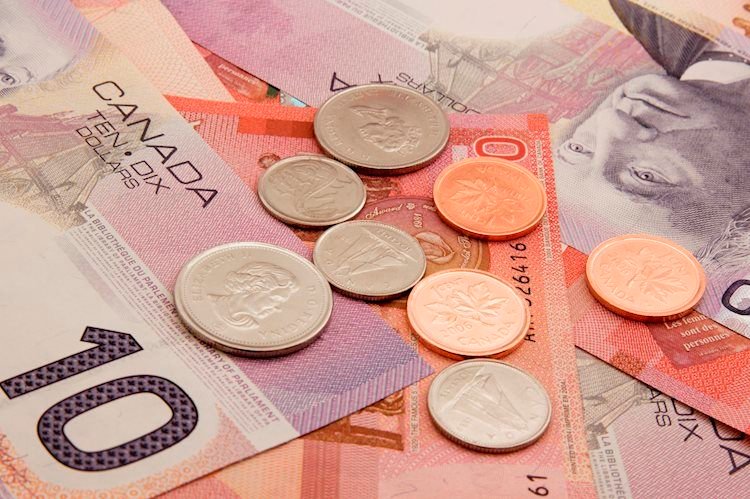- Gold price ticks lower amid some profit-taking near the all-time peak set this Thursday.
- The uncertainty over the Fed’s rate-cut path weighs on the USD and should lend support.
- Persistent geopolitical tensions might also contribute to limiting losses for the XAU/USD.
Gold prices (XAU/USD) eases after touching a fresh record high on Thursday and trades with a mild negative bias, below the $2,300 mark heading into the European session. Bulls turn cautious in the wake of extremely overstretched conditions on the daily chart and a positive tone around the equity markets, which tends to undermine demand for the safe-haven precious metal. That said, any meaningful corrective pullback for the commodity still seems elusive in the wake of geopolitical risks stemming from the protracted Russia-Ukraine war and conflicts in the Middle East.
Meanwhile, the US Dollar (USD) extends this week’s steep retracement slide from its highest level since February 14 and drifts lower for the third successive day amid the uncertainty over the Federal Reserve’s (Fed) interest rate-cut path. This could also lend support to the Gold price and help limit the downside. Traders might also opt to move to the sidelines ahead of the crucial US employment details, popularly known as the Nonfarm Payrolls (NFP) report, which will play a key role in influencing the Fed’s future policy decision and provide a fresh impetus to the non-yielding yellow metal.
Daily Digest Market Movers: Gold price bulls take breather, downside seems limited amid geopolitics and weaker USD
- The risk that the Israel-Hamas war may spread to include Iran and spark a wider conflict in the Middle East pushes the safe-haven Gold price to a fresh all-time peak.
- Iran has vowed to retaliate against the Israeli attack on its embassy compound in Damascus – Syria’s capital – that killed two Iranian generals and five military advisers on Monday.
- Mixed cues on interest rates from the Federal Reserve officials drag the US Dollar to a one-week low and turn out to be another factor benefiting the yellow metal.
- Influential FOMC members, including Fed Chair Jerome Powell, reiterated this week that the central bank will cut rates in 2024, though offered few cues on the timing.
- Powell said on Wednesday that it would take a while to evaluate the current state of inflation and emphasized the need for more debate and data before interest rates are cut.
- The yield on the benchmark 10-year US government bond retreated after hitting a four-month high on Wednesday, which acts as a tailwind for the non-yielding XAU/USD.
Technical Analysis: Gold price witnesses some profit-taking amid extremely overbought RSI on the daily chart
From a technical perspective, the extremely overbought Relative Strength Index (RSI) on the daily chart makes it prudent to wait for some near-term consolidation or a modest pullback before positioning for any further appreciating move. Meanwhile, any corrective decline might now find some support near the $2,280 level ahead of the overnight swing low, around the $2,265 region. Some follow-through selling, however, might drag the Gold price further below the $2,250 level towards the weekly through, around the $2,229-2,228 zone. The latter should act as a key pivotal point, which, if broken decisively, should pave the way for deeper losses and expose the $2,200 psychological mark.
Risk sentiment FAQs
In the world of financial jargon the two widely used terms “risk-on” and “risk off” refer to the level of risk that investors are willing to stomach during the period referenced. In a “risk-on” market, investors are optimistic about the future and more willing to buy risky assets. In a “risk-off” market investors start to ‘play it safe’ because they are worried about the future, and therefore buy less risky assets that are more certain of bringing a return, even if it is relatively modest.
Typically, during periods of “risk-on”, stock markets will rise, most commodities – except Gold – will also gain in value, since they benefit from a positive growth outlook. The currencies of nations that are heavy commodity exporters strengthen because of increased demand, and Cryptocurrencies rise. In a “risk-off” market, Bonds go up – especially major government Bonds – Gold shines, and safe-haven currencies such as the Japanese Yen, Swiss Franc and US Dollar all benefit.
The Australian Dollar (AUD), the Canadian Dollar (CAD), the New Zealand Dollar (NZD) and minor FX like the Ruble (RUB) and the South African Rand (ZAR), all tend to rise in markets that are “risk-on”. This is because the economies of these currencies are heavily reliant on commodity exports for growth, and commodities tend to rise in price during risk-on periods. This is because investors foresee greater demand for raw materials in the future due to heightened economic activity.
The major currencies that tend to rise during periods of “risk-off” are the US Dollar (USD), the Japanese Yen (JPY) and the Swiss Franc (CHF). The US Dollar, because it is the world’s reserve currency, and because in times of crisis investors buy US government debt, which is seen as safe because the largest economy in the world is unlikely to default. The Yen, from increased demand for Japanese government bonds, because a high proportion are held by domestic investors who are unlikely to dump them – even in a crisis. The Swiss Franc, because strict Swiss banking laws offer investors enhanced capital protection.

























